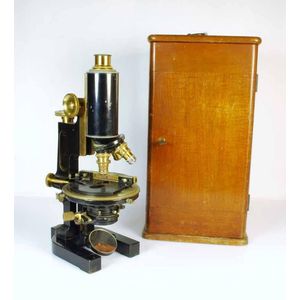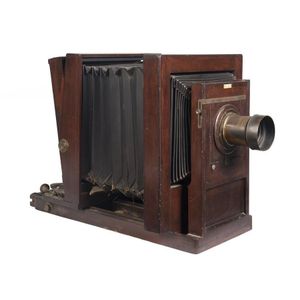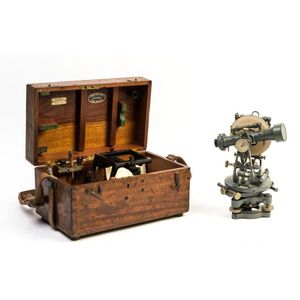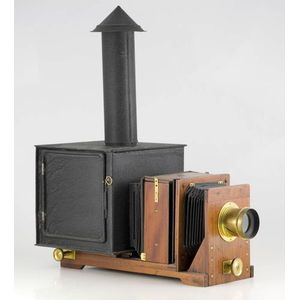Victorian Japanned Magic Lantern with Brass Lens
You must be a subscriber, and be logged in to view price and dealer details.
Subscribe Now to view actual auction price for this item
When you subscribe, you have the option of setting the currency in which to display prices to $Au, $US, $NZ or Stg.
- Victorian Period - The Victorian period of furniture and decorative arts design covers the reign of Queen Victoria from 1837 to 1901. There was not one dominant style of furniture in the Victorian period. Designers used and modified many historical styles such as Gothic, Tudor, Elizabethan, English Rococo, Neoclassical and others, although use of some styles, such as English Rococo and Gothic tended to dominate the furniture manufacture of the period.
The Victorian period was preceded by the Regency and William IV periods, and followed by the Edwardian period, named for Edward VII (1841 ? 1910) who was King of the United Kingdom and the British Dominions and Emperor of India for the brief period from 1901 until his death in 1910. - Japanning - Japanning is the early eighteenth century technique used by European craftsmen to imitate the oriental style lacquer work that became popular in England, France, the Netherlands, and Spain in the 17th century.
The lacquer used was based on the lac beetle dissolved in alcohol (as used in French polish) and differed from the Chinese lacquer which was based on tree sap.
Each layer of the lacquer was allowed to dry and then sanded down. It was applied over cream, yellow, green, red, or black grounds. Japanning using gold leaf was also widely used with lacquer work. The technique can be found on bureaux, cabinets, chests, longcase clocks, and chairs. - Mahogany - Mahogany is a dense, close grained red-coloured timber from the West Indies and Central America. It was first imported into Europe in the the early 18th century and its use continued through the 19th century. It was popular for furniture making because of its strength, the wide boards available, the distinctive grain on some boards, termed flame mahogany and the rich warm colour of the timber when it was polished.. The "flame" was produced where a limb grew out from the trunk of the tree, and this timber was usually sliced into veneers for feature panels on doors, backs and cornices.
Some terms used to describe mahogany relate to the country from which it originally came, such as "Cuban" mahogany, "Honduras" mahogany etc. However unless the wood has been tested the names assigned are more a selling feature, rather than a true indication of the timber's origin.
This item has been included into following indexes:
Visually similar items

A Bausch & Lomb large compound microscope, c.1930's, with original box, key, and accessories. Height 37.5 cm (box)

A late 19th century cabinet view size (8' x 6') timber studio camera. The camera with side-hinged ground glass viewing screen that swings out for insertion of plateholder and equipped with a Dallmeyer 3B brass lens Sn 38592. The bellows in need of attentio

A Theodolite by Cooke Troughton & Simms Ltd. in case, early 20th century, stamped York England, 33 cm high

A monocular microscope, swift & Son, London, on black lacquered limb and foot, cased with accessories, the case 29 x 18.5 cm, (key)
